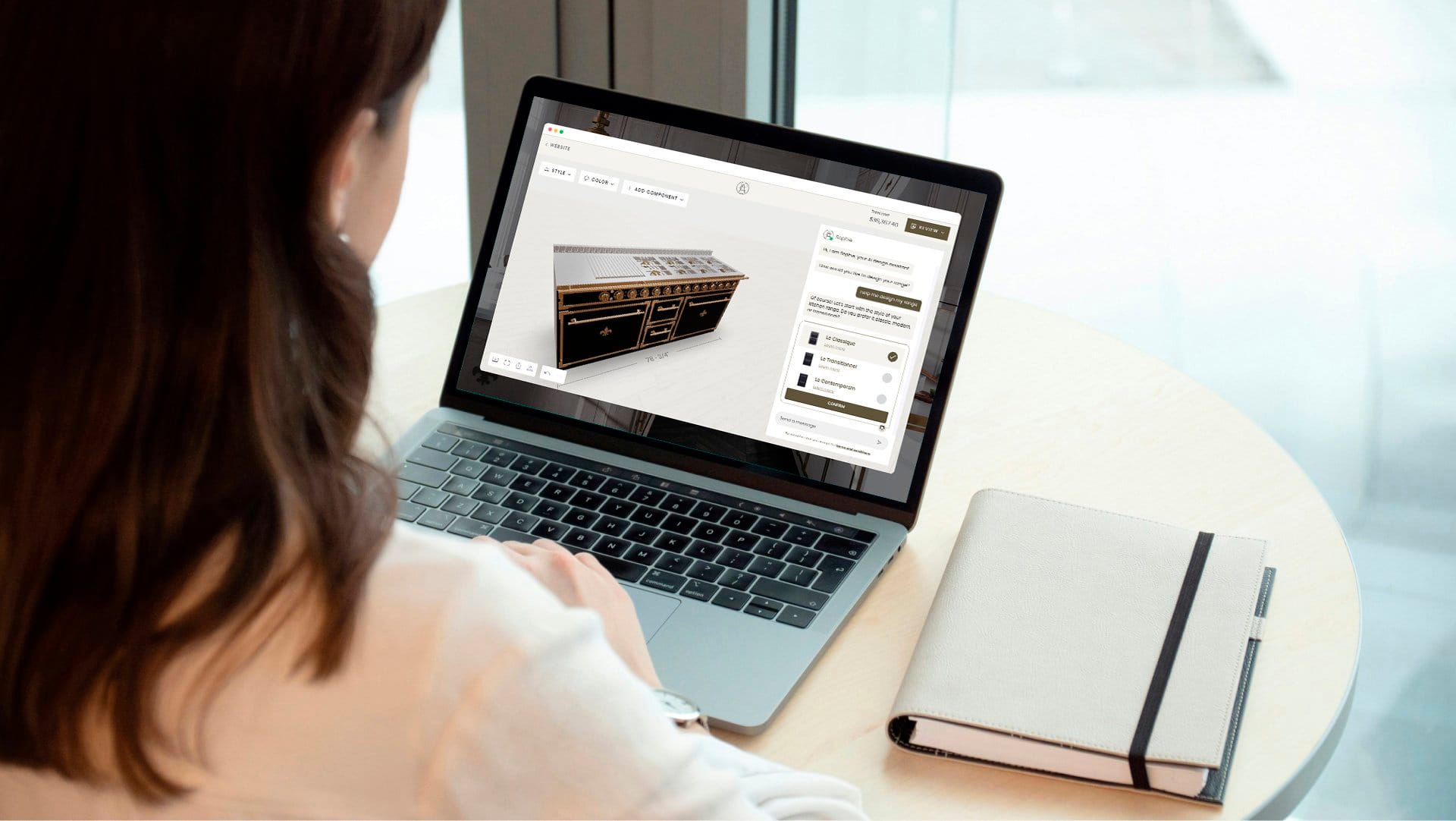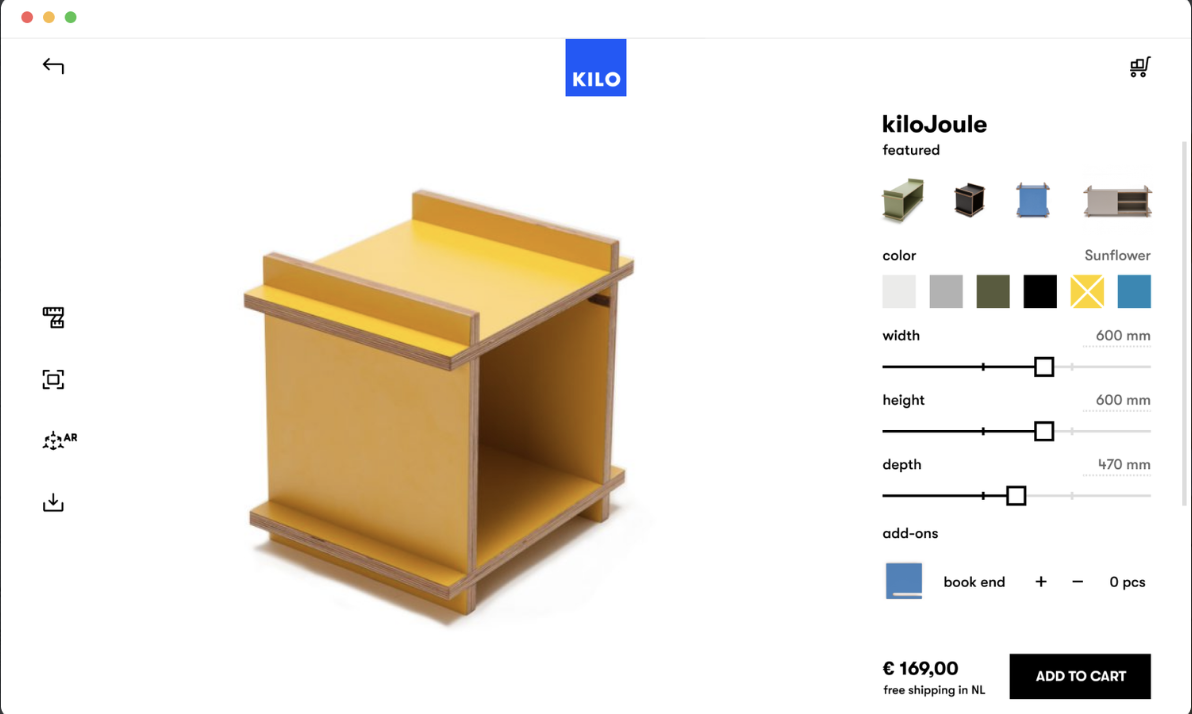Complete Guide: What Is a Product Configurator and How It Works
What is a product configurator? See how it works and why it’s key for faster quotes, accurate orders, and a better buying experience.

Complex products are hard to sell the old way. When dimensions, components, and add-ons can be combined in thousands of ways, static catalogs and email chains slow everything down. Customers get frustrated waiting for answers, and sales teams lose valuable time trying to quote through endless back-and-forth.
This is where product configurators come in. They turn customization into a visual experience showing buyers exactly what’s possible, while enforcing the rules in the background. At the same time, they give sales, marketing, and product teams better data, faster quotes, and a direct link between customer choices and production. This guide will walk through what product configurators are, how they work, where they’re used, and what the future looks like.
What Is a Product Configurator?
A product configurator, also called visual product customizer, is software that helps businesses and customers tailor a product to their exact needs. Instead of flipping through static catalogs or waiting on back-and-forth emails, the configurator guides users through all the available options step by step and applies changes in real-time.
This is especially valuable for complex or modular products like cabinets or railings, where dimensions, materials, and add-ons can be combined in countless ways. The configurator takes care of the rules in the background, so every choice fits together correctly and results in a product that can actually be built.
It can be used in different ways:
- As sales configurator software for internal teams to speed up quoting and reduce errors
- By dealers and partners to handle orders more efficiently
- Directly by end customers through an on a company’s website
Beyond streamlining customization, configurators create value across the entire business. Every interaction reveals how customers think, which features they prefer, and what configurations actually convert into sales. This turns the configurator into more than just a digital sales tool. It becomes a source of insights that marketing, sales, and product teams can all use to work smarter.
Why Should Your Teams Use Product Configuration?
A configurator is more than just a customer-facing feature. It delivers measurable impact across sales, marketing, and product teams by improving accuracy, reducing manual work, and creating new opportunities for growth.
For Sales Teams:
- Better-qualified opportunities: By capturing detailed product requirements early, sales reps spend less time chasing unqualified leads.
- Faster deals: Real-time configuration shortens the sales cycle by 2–3x, eliminating back-and-forth on pricing and options.
- More upsells: By presenting add-ons during configuration, upsell opportunities can increase by 30%.
For Marketing Teams:
- Stronger brand impact: An interactive configurator reinforces brand perception and increases customer trust by 40%.
- Lower bounce rates: Personalized configuration flows keep buyers engaged, reducing drop-offs by 35%.
- Smarter campaigns: Preference data from configurator use makes marketing campaigns up to 2x more targeted and effective.
For Product Teams:
- Fewer errors: Built-in logic cuts configuration errors by 90%.
- Reduced returns: 3D visualization lowers online return by 40%, as buyers know exactly what they’ll get.
- Less manual work: Automating configuration and quoting reduces manual effort by 95%, freeing teams to focus on higher-value tasks.
How Do Product Configurator Software Work?
Product configurators work by combining product data, business rules, and visualization into one interactive system. The process usually works like this:
1. Product logic defines what’s possible: Every configurator starts with a set of rules. These rules determine how components fit together, what dimensions are allowed, and which options can or cannot be combined. This prevents errors, such as selecting a railing material that doesn’t support a certain height, or a cabinet door that won’t fit the chosen layout.
2. Real-time visualization brings the product to life: As customers make changes, the configurator updates immediately. This instant feedback gives buyers confidence in their choices and removes the uncertainty of imagining how a product might look.
3. Automated pricing with CPQ: CPQ (Configure, Price, Quote) is built into the configurator itself. As customers adjust dimensions or features, the software applies rules in the background and updates the price instantly. This removes manual calculations for sales teams, and gives buyers clear visibility on pricing while they configure.
4. Integration ensures a seamless workflow: Advanced product configurators don’t just show products. They connect to business systems like ERP, CRM, or e-commerce platforms. This allows them to generate bills of materials, CAD drawings, or order files automatically, creating a direct bridge from customer choice to manufacturing.
Configurator Examples: What Industries are Using them?
Product configurators are used in many industries, from furniture and home improvement to construction and manufacturing. They make it possible to configure complex products quickly, reduce errors, and give customers a more interactive experience. Below are a few real-world examples of product customization and how different companies are using it.
Cabinet Product Configurator: Designing a Vanity in Just a Few Clicks
This cabinet manufacturer offers customers a fast, fully visual way to design and order their dream vanity. Buyers can start from scratch or choose from curated inspirations, interact with the 3D model to move and rotate the design, and see pricing update instantly with every selection. They can also add walls, sinks, and accessories for a realistic preview, then send the finished configuration straight to checkout.
Railing Product Configurator: Quoting in Minutes Instead of Hours
Easysteel used to rely on manual workflows where quoting even a simple railing took significant time and effort. With a railing product configurator, the entire process now takes under five minutes. Sales teams save 90% of the manual work, buyers get full control over layout and dimensions, and more orders are completed thanks to a clear step-by-step flow with 3D visualization.
Pergola Product Configurator: Streamlining Customization for Dealers
This pergola manufacturer replaced their outdated, manual quoting system with a 3D product configurator powered by parametric models. Dealers can now design pergolas step by step, get instant pricing with built-in CPQ, and share 3D views with customers. The configurator also generates BOMs, syncs with their CRM, and includes an order management dashboard.
Shelving Product Configurator: From Custom Design to Automated Production
KILO, a modular shelving manufacturer, struggled with slow design-to-production workflows and limited options for online customization. With their product configurator, customers can now adjust layouts, dimensions, and finishes in real time, while visual CPQ updates pricing instantly. On the backend, the configurator generates BOMs, CAD drawings, and cut sheets automatically, sending them straight to CNC machines. This cut manual work, reduced errors, and gave KILO a scalable way to grow its custom furniture sales.

What Are the Best Product Configurators for Your Needs?
Not every business needs the same kind of configurator. In most cases, you’ll be choosing between two main types: an off-the-shelf configurator or a custom configurator. The right option depends on how complex your products are and what role the configurator should play in your sales process.
Off-the-Shelf Product Configurator
Best for simple products where customers only need to choose from a limited set of options like colors or materials. These configurators are quick to set up and affordable but come with limitations: no advanced branding, no integrations, and no exports such as BOMs or CAD files.
Custom or Complex Product Configurator
Built for modular products with advanced requirements. These configurators allow millimeter-precise customization, support complex layouts, and provide a fully branded user experience. They can integrate with ERP and manufacturing systems, generate BOMs and CAD exports automatically, and handle large product catalogs at scale.
Salsita builds custom product configurators designed for complex products. Parametric models handle the technical rules, visual CPQ keeps pricing accurate in real time, and integrations connect directly to ERP, CRM, or manufacturing systems. On top of that, our AI assistant makes configuration more intuitive by guiding users through choices in natural language
Not sure which type fits your business? Take this quiz:

The Future of Product Configurators
AI is reshaping every industry, and product customization is no exception. 3D visuals and AR already help buyers see their choices, but AI takes configurators to the next level. With 80% of consumers more likely to purchase from brands that offer personalization and 76% open to AI assistants answering questions, expectations are moving toward guided, effortless experiences.
AI-powered configurators go beyond traditional 3D tools by making customization more conversational. Instead of clicking through endless menus, buyers can describe what they want, ask for recommendations, and get instant tailored suggestions. Just like speaking with a sales rep.

At Salsita, we’ve developed the world’s first Conversational Configurator to make product customization as natural as a conversation. Instead of clicking through menus, buyers can simply describe their needs to the AI assistant, ask for recommendations, and let it adjust options in real time.
This is not just another chatbot. The AI assistant understands customers preferences, ensures configurations are valid, and provides a smooth, interactive experience.
Wrapping Up
Product configurators have moved from being differentiators to essential tools for industries built on customization. They not only speed up quoting and production but also shape how buyers interact with products online. Customers now expect smooth, visual, and accurate product configuration platforms. And companies that fail to meet these expectations risk falling behind.
At Salsita, we design product configurators for complex products that go beyond visualization. Parametric models handle technical precision, visual CPQ ensures instant and reliable pricing, and integrations connect directly to ERP and manufacturing systems. With the addition of an AI assistant, configuration becomes more intuitive, guiding users step by step in natural language.
Want to see how a configurator could work for your business? Book a demo with our team and explore what’s possible:




